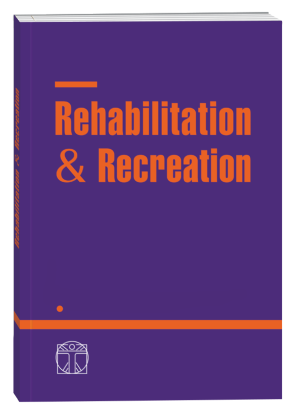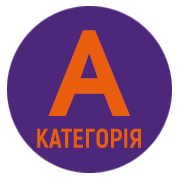METHODS OF USING PHYSICAL EXERCISES IN THE PROCESS OF FORMING WRITING SKILLS IN CHILDREN
DOI:
https://doi.org/10.32782/2522-1795.2023.17.22Keywords:
children, writing, physical exercises, dysgraphia, memory.Abstract
The article highlights the issue of the formation of writing skills in children with the help of physical exercises. Practical studies among children indicate a growing number of those who have problems with correct writing. The necessity of using physical exercises as an effective means of forming writing skills in children is emphasized. The purpose of our study was to assess the effectiveness of physical exercises in the process of forming writing skills in children. We determined that the children’s coordination is not sufficiently developed, the movements of the hands are not coordinated with the movements of the forearm, due to which the child often changes the position of the hand and the notebook. If the preschooler does not learn to hold the brush correctly and to place the notebook correctly on the surface of the table, in the future he will write letters with a broken slant – too left or right. On the basis of practical research and analysis of scientific and methodological literature, the main characteristics of children’s writing skills are outlined and the sequence of actions of the teacher in the process of organizing the lesson is determined. Special attention was paid to the practical aspects of the formation of writing skills with the help of physical exercises. The collection and analysis of information on the topic of the study was carried out on the basis of the Psychological and Pedagogical Consultation Center № 1 in Gdynia. After analyzing children’s written works, identifying typical mistakes made by students in the process of independent writing, we selected a number of methods and physical exercises that can be used during classes to overcome or eliminate dysgraphic errors. The formation of writing is a complex systematic and arbitrary mental process that includes the joint work of various analyzers, in particular speech-motor, speech-auditory, visual, and motor.
References
Голуб Н.М. Методи та прийоми навчальної та корекційно-розвивальної роботи з молодшими школярами з порушеннями формування писемного мовлення. Науковий часопис НПУ імені М.П. Драгоманова. Серія 19: Корекційна педагогіка та спеціальна психологія. 2014. № 26. С. 66–72.
Журавльова Л.С. Науково-теоретичний аналіз сутнісних відмінностей поняття «дисграфія». Актуальні питання корекційної освіти, 2017. № 10. С. 106–116.
Кулачківська С.Є. Методи вивчення психічного розвитку дошкільника: науково-методичний посібник. Київ : Світоч, 2003. 179 с.
Лічман Н.М. Кінезіологія як засіб розвитку мовлення та інтелектуальних здібностей дітей з особливими потребами. Логопед. 2018. № 6. С. 12–16.
Манько Н.В., Шумілова Н.В. Психолінгвістичні основи навчання правопису. Психолого-педагогічні умови організації розвивального середовища в закладах освіти :матеріали Всеукр. наук.-практ. конф. Херсон :ХДУ. 2010. С. 345–351.
Павлик О. Специфіка писемного мовлення і засоби його розвитку. Початкова школа. 2012. № 9. С. 45–48.
Тенцер Л.В. Діагностика та корекція дисграфії у молодших школярів : дис. ... канд. пед. наук: 13.00.03. Київ, 2021. 310 с.
Чередніченко Н.В. Формування фонетико-графічної грамотності у молодших школярів із порушеннями мовленнєвого розвитку в умовах корекційного навчання. Навчально-методичний посібник. Київ : ДІА, 2016. 212 с.
Dziubiński Z., Janowski K.W. Kultura fizyczna w społeczeństwie nowoczesnym – Salezjańska Organizacja Sportowa Rzeczypospolitej Polskiej, Warszawa, 2009.
Grygus I., Jewtuch М. Wpływ zaproponowanej metodyki wychowania fizycznego na stan funkcjonalny studentów. Journal of Health Sciences. 2013; № 3(9). P. 417–426.
Kaźmierczak A., Makarczuk A., Maszorek-Szymala A. Kultura fizyczna i zdrowotna w życiu człowieka. Łódź, 2007.
Nazaruk S., Tokarewicz E., Klim-Klimaszewska A. Poziom rozwoju grafomotorycznego u dzieci 5-letnich w aspekcie gotowości do podjęcia nauki pisania. Roczniki Pedagogiczne. 2019. № 11, 2. P. 133–147.
Tomporowska J., Grygus I., Levandowska L. Aktywność fizyczna uczniów z niepełnosprawnościami – wybrane zagadnienia. Rehabilitation & recreation. 2023. № 14. P. 179–185. https://doi.org/10.32782/2522-1795.2023.14.21
Downloads
Published
How to Cite
Issue
Section
License

This work is licensed under a Creative Commons Attribution-NonCommercial-NoDerivatives 4.0 International License.












